Role Basketball player Occupation Architect Height 1.98 m | Awards Herder Prize (1997) Weight 93 kg Name Bogdan Bogdanovic Career start 2010 | |
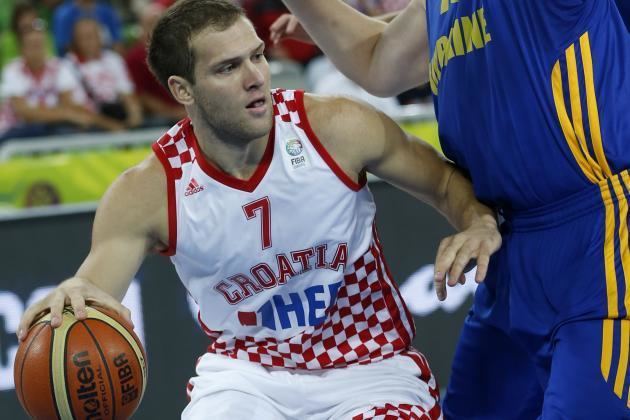 | ||
Born 20 August 1922 ( 1922-08-20 ) Belgrade, Kingdom of Serbs, Croats and Slovenes Died 18 June 2010(2010-06-18) (aged 87)
Vienna, Austria Buildings Jasenovac monument
Partisan cemetery in Mostar Parents Koviljka Bogdanovic, Dragan Bogdanovic Current teams Fenerbahce Men\'s Basketball Team (#13 / Point guard, Shooting guard), Serbia national basketball team Similar People Nemanja Bjelica, Milos Teodosic, Miroslav Raduljica, Nikola Kalinic, Bojan Bogdanovic Profiles | ||
Alma mater University of Belgrade | ||
Bogdan bogdanovic nba draft 27 pick coming from kk partizan wrong highlight fail
Bogdan Bogdanović (Serbian Cyrillic: Богдан Богдановић; 20 August 1922 − 18 June 2010) was a Serbian architect, urbanist and essayist. He taught architecture at the University of Belgrade Faculty of Architecture, where he also served as dean. Bogdanović wrote numerous articles about urbanism, especially about its mythic and symbolic aspects, some of which appeared in international journals such as El País, Svenska Dagbladet, Die Zeit, and others. He was also involved in politics, as a partisan in World War II, later as mayor of Belgrade. When Slobodan Milošević rose to power and nationalism gained ground in Yugoslavia, Bogdanović became a dissident.
Contents
- Bogdan bogdanovic nba draft 27 pick coming from kk partizan wrong highlight fail
- Life
- Teaching
- Works
- Memorials
- Settlements
- Other works of architecture
- Literature
- Memberships
- Awards
- References

Bogdanović is best known for designing monuments and memorials commemorating victims and resistance fighters of World War II built all over Yugoslavia from the early 1950s to 1980s. In particular, the monumental concrete sculpture titled Stone Flower near the site of Jasenovac concentration camp gained international attention.
Life
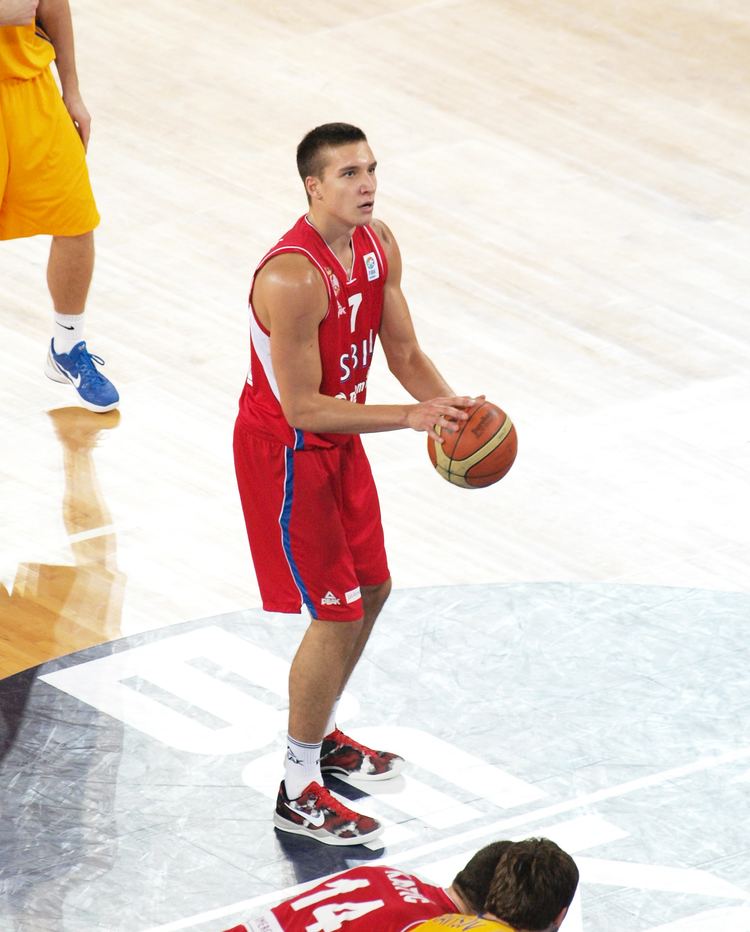
Bogdanović was born into a family of leftist intellectuals. His father Milan was a literary critic, president of the Union of Writers and director of the National Theatre. Beginning in 1940, Bogdan studied architecture at the University of Belgrade. He participated in World War II ("a bit" in his words) as a Partisan, becoming a member of the Communist Party, and was seriously wounded in eastern Bosnia. Despite his injuries, he continued his academic career after the war, graduating in 1950, becoming a teaching assistant at the department for urbanism (from 1953), then a docent in 1960, extraordinary professor and president of the Yugoslav Union of Architects in 1964, dean of the Faculty of Architecture and a corresponding member of the Serbian Academy of Sciences and Arts (SANU) in 1970, and full professor in 1973. In 1981 he resigned from SANU, and he was conferred emeritus status in 1987.
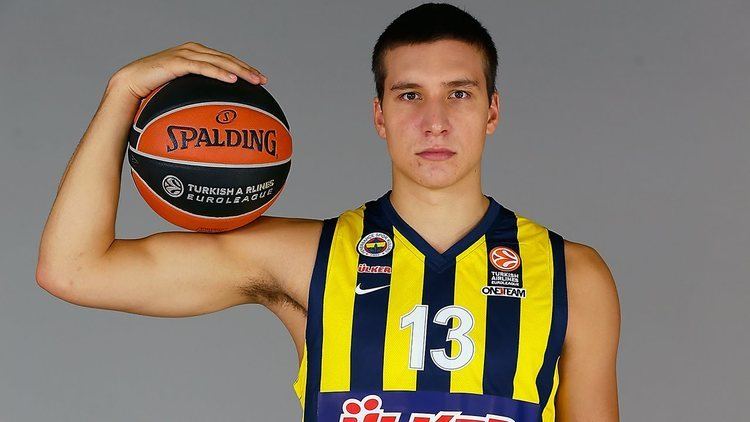
Being an ardent leftist, Bogdanović opposed the increasing nationalism espoused by state leaders since the early 1980s. Nonetheless, he became Mayor of Belgrade in 1982 on the initiative of Ivan Stambolić, then chairman of the League of Communists of Serbia. Bogdanović served one term in office, until 1986. During this time, he organised an international competition for the complete redevelopment of New Belgrade, a planned area on the left ban of the Sava river. All submissions to this competition have since disappeared.
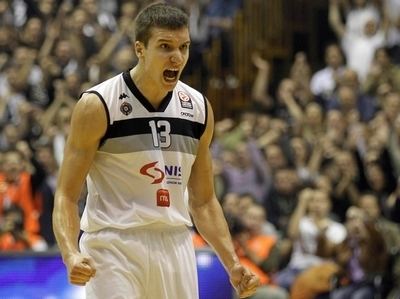
After his term of office, he was appointed by Slobodan Milošević as a member of the Central Committee of the League of Communists of Yugoslavia, the party's supreme governing body. He accepted the post under the condition that he would not be required to attend committee meetings because he "had more important things to do". In the following year he sent Milošević an anti-nationalist letter over 60 pages long, including a Stalino-dictionary, an appendix satirising the recipient's nationalist rhetoric, and the famous Lamentation for Serbia, which discussed the theme of Serbia "being tired" (of its leaders). The Central Committee replied, "You can send the letter, in which you criticise the work of the eighth meeting and which has not reached us, to the Central Committee if you consider it necessary". The letter, in combination with other remarks about Milošević, led to attempts of breaking into Bogdanović's apartment, death threats, and his exclusion from the Central Committee. This, however, did not prevent him from renewing his anti-nationalist statements when the Yugoslav wars started at the beginning of the 1990s, once more turning Bogdanović into target for violent attacks and a defamation campaign run by the Serbian state media.
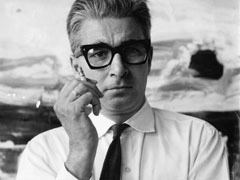
In 1993 Bogdanović went into self-imposed exile to Paris with his wife Ksenija. However, since the Yugoslav émigré circle there had strong nationalistic tendencies, the couple moved on to settle in Vienna upon invitation of his friend, the writer and translator Milo Dor. Bogdanović died in a hospital in Vienna on 18 June 2010, following a heart attack.
Teaching
At the University of Belgrade, Bogdanović held the lecture course The development of housing schemes (later called History of town), starting in 1962. As professor and dean, he tried to reform the teaching of architecture and introduce grassroots democracy at the university, but the party forced him to abdicate before he could put his plans into practice.
In 1976 he began to teach in an abandoned village school in Mali Popović near Belgrade to realise an alternative project, namely his "village school for the philosophy of architecture". The course was called Symbolic forms in allusion to Ernst Cassirer, had no fixed timetable and employed the invention of new writing systems, the interpretation of non-existent texts, as well as methods akin to free association and gematria. 14 years later, when henchmen of Milošević raided the school in the aftermath of Bogdanović's letter, much of the collected material – the documentation of the lessons, drawings, audio- and videotapes, optical devices – was destroyed.
Works
The architectonic and literary work of Bogdanović is characterised by an abundance of ornaments. It is influenced by Romanticism and Victorian architecture, surrealism, metaphysics, Jewish symbolism and Kabbalah. Bogdanović has opposed the architectural theories of Adolf Loos developed in the essay Ornament and Crime, and argued for the "semantic dignity of the ornamental sign".
Memorials
In 1951 Bogdan Bogdanović won a competition for the design of a memorial to the Jewish victims of fascism, to be built on the Sephardic cemetery in Belgrade. Although not religious himself, this contact with Jewish esotericism strongly influenced his further work. From then on until 1981, he was assigned by Josip Broz Tito to devise more than 20 monuments and memorial places against fascism and militarism, which were erected in all republics of Yugoslavia. To work as cenotaphs for all victims of fascism, regardless of nationality and religion, they lack any symbols of communism or other ideologies. Instead, they rely on archaic, mythological forms, sharply contrasting with the principles of Socialist realism. This contrast also served Tito's wish to emphasise his country's independence from the Soviet Union.
All of the memorials are built of stone, shaped by local untrained chisellers whom Bogdanović preferred to ones with formal education, who were inflexible in his opinion. The notable exception, the Jasenovac monument, consists of prestressed concrete, the formwork for which was constructed by shipwrights. Somewhat incongruously, it is known as the Flower of Stone.
Examples of these monuments are:
Settlements
Bogdanović refused to participate in the planning of national housing estates which looked like "coffins of concrete" to him and had "only two types of windows". Consequently, he built only a single settlement: a housing estate for the hydrotechnical institute "Jaroslav Černi" at the foot of the mountain Avala near Belgrade, finished in 1953. The houses are mostly built of stone; and with their surrealistic, old-fashioned style, heavily framed windows and oversized chimneys, they are deliberately set apart from the international style that dominated in post-WW2 Yugoslavia.
Other settlements were planned in great detail, but never really intended to be built. Among those is a town in northern Montenegro, designed for local clients, and a mythological "town at the bottom of the lake (Biograd)" which Bogdanović designed for his own pleasure.
Other works of architecture
Other works of architecture include the reconstruction of the villa of Queen Natalija (Smederevo, 1961), Adonis' altar (Labin, 1974) and the Tomb of Dušan Petrović-Šane (Aranđelovac, 1980).
Literature
Books and essays in Serbo-Croatian include:
Six of his books were published in German by Zsolnay and Wieser:
Of the essays written by Bogdanović, the following is available in English:
Memberships
Bogdanović was a founder member of the International Academy of Architecture which was established in 1987 and a foreign member of the Russian Academy of Architecture (from 1994), a corresponding member of the Bavarian Academy of Fine Arts (from 1998), and a member of the Collegium Europaeum Jenense (University of Jena; from 2000). In 2002 he was elected an honorary member of the Academy of Sciences and Arts of Bosnia and Herzegovina.
Awards
Awards and prizes include:
